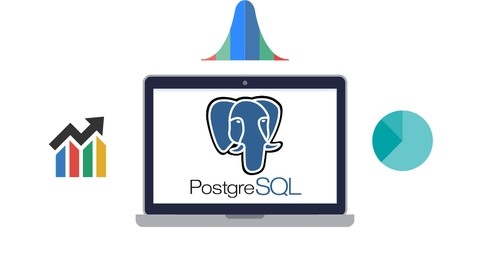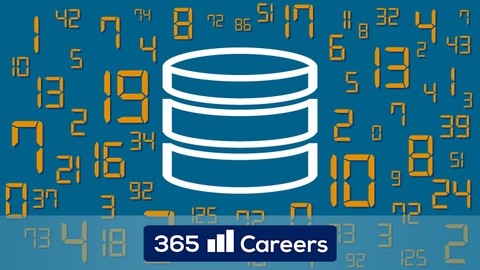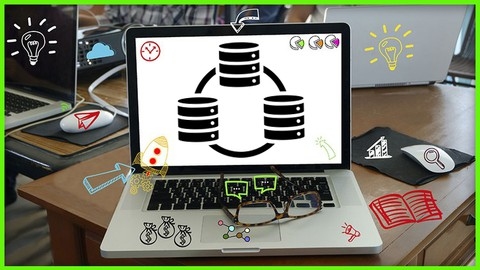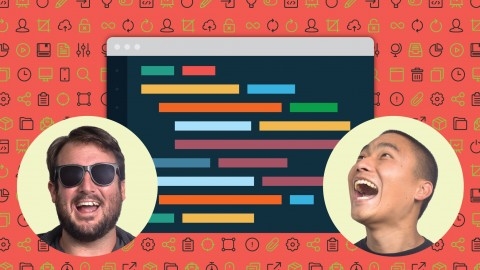Learning SQL can open doors to exciting career paths in data analysis, software development, and more.
But with so many SQL courses on Udemy, finding the right one can feel overwhelming.
You want a course that’s comprehensive, engaging, and taught by experienced instructors – one that will help you master SQL and confidently apply your skills.
We’ve reviewed countless SQL courses on Udemy and carefully selected the best ones for various learning levels and goals.
For the best SQL course on Udemy overall, we recommend The Complete SQL Bootcamp: Go from Zero to Hero.
This comprehensive course takes you from the very basics of SQL to advanced concepts, including joins, subqueries, and database administration.
The course uses practical examples and real-world scenarios, making it easy to apply what you learn.
But this is just the beginning.
We’ve also included courses focused on specific database management systems like MySQL and Oracle, as well as courses designed for beginners, intermediate learners, and even experts.
Keep reading to discover the perfect SQL course for you!
The Complete SQL Bootcamp: Go from Zero to Hero
The course starts with an introduction, covering the basics of databases and providing installation guides for PostgreSQL on Windows and MacOS.
This ensures you have the right setup before diving into SQL.
Next up is the SQL fundamentals chapter, where you’ll learn the core SQL syntax for querying data.
The lectures cover essential statements like SELECT, DISTINCT, COUNT, WHERE, ORDER BY, and more.
Challenges reinforce each concept, helping you practice what you’ve learned.
The course then dives into the powerful GROUP BY statement, teaching you how to aggregate and summarize data.
You’ll learn about aggregation functions, HAVING clauses, and tackle more challenges.
After an assessment test to gauge your progress, you’ll explore JOINs - a crucial concept for combining data from multiple tables.
Different types of joins like INNER, OUTER, LEFT, and RIGHT are covered, along with the UNION operator.
The advanced SQL commands chapter expands your skillset with timestamps, mathematical functions, string operations, subqueries, and self-joins.
Another assessment test follows to solidify your understanding.
You’ll then learn how to create and manipulate databases and tables using SQL commands like CREATE, INSERT, UPDATE, DELETE, and ALTER.
Data types, constraints, and keys are also covered.
The course continues with conditional expressions like CASE, COALESCE, CAST, and NULLIF, as well as an introduction to views in PostgreSQL.
If you’re interested in using Python with PostgreSQL, there’s a bonus section covering the psycopg2 library.
Throughout the course, you’ll find clear explanations, coding exercises, and solutions to reinforce your learning.
The Ultimate MySQL Bootcamp: Go from SQL Beginner to Expert
You start by learning what a database is and how to install MySQL on your system.
The course then dives into creating databases, tables, and working with different data types.
You’ll learn how to insert, update, and delete data using SQL commands, mastering the fundamentals of CRUD operations.
As you progress, you’ll explore string functions, refining selections with ORDER BY, LIMIT, and LIKE operators.
The course covers aggregate functions like COUNT, SUM, and AVG, along with subqueries and grouping data.
You’ll revisit data types in-depth, working with dates, times, and timestamps.
The instructor introduces you to comparison and logical operators, constraints like UNIQUE and CHECK, and the ALTER TABLE statement.
You’ll dive into one-to-many and many-to-many relationships, joining tables using various types of JOINs.
The course covers advanced topics like views, modes like STRICT_TRANS_TABLES, and window functions like RANK, DENSE_RANK, and LEAD/LAG.
You’ll work on a real-world project, cloning an Instagram-like database schema and querying data.
Towards the end, you’ll learn about database triggers, writing your own triggers for tasks like preventing self-follows on Instagram.
The course also briefly touches on integrating MySQL with Node.js, building a simple web app.
SQL - MySQL for Data Analytics and Business Intelligence
The course starts with the fundamentals, introducing you to databases, SQL as a declarative language, and the different types of SQL statements like DDL, DML, DCL, and TCL.
The course then dives into the intricacies of MySQL, covering topics like data types, constraints, coding techniques, and best practices.
One of the standout features of this course is its practical approach.
You’ll learn by working with real-world databases like the ’employees’ database, which allows you to practice and reinforce the concepts you’ve learned.
The course covers essential SQL statements like SELECT, INSERT, UPDATE, and DELETE, along with advanced topics like aggregate functions, joins, subqueries, self-joins, views, and stored routines.
The instructor does an excellent job of explaining complex concepts in a clear and concise manner, using visuals and examples to aid understanding.
The course also covers advanced topics like MySQL indexes, triggers, window functions, common table expressions (CTEs), and temporary tables, which are invaluable for data analysts and business intelligence professionals.
Additionally, the course includes a section on combining SQL and Tableau, which is a powerful data visualization tool.
You’ll learn how to transfer data from MySQL to Tableau and create insightful visualizations and dashboards, enhancing your data analysis and presentation skills.
Throughout the course, you’ll encounter exercises and quizzes that reinforce your learning and help you practice the concepts you’ve learned.
The instructor provides detailed solutions, ensuring that you understand the material thoroughly.
One of the unique aspects of this course is its focus on writing efficient and professional SQL code.
The instructor emphasizes coding techniques and best practices, which will be invaluable as you work on real-world projects.
SQL for Beginners: Learn SQL using MySQL and Database Design
The course starts by introducing you to databases, SQL, and MySQL - explaining what they are and how they work.
You’ll then learn how to install MySQL on Windows, Mac, or Linux, and get an overview of MySQL Workbench, which will be your main tool.
Next up is the Data Definition Language section, covering data types, primary and foreign keys, creating databases, modifying and deleting tables.
The course dives deeper into altering tables - adding/removing primary keys, foreign keys, unique constraints, and changing column names/data types.
You’ll practice these concepts through exercises.
Moving on, you’ll learn the Data Manipulation Language for inserting, updating, and deleting data in tables.
The selecting from tables section teaches you how to use SELECT statements, WHERE clauses, operators like IN, BETWEEN, LIKE, and more.
You’ll order and limit results, use aliases, and solve practice problems.
Joining multiple tables is covered next - inner, left, right joins, and creating entity relationship diagrams.
Database design principles like normalization (1NF, 2NF, 3NF) and different types of relationships are explained.
You’ll then build a cinema booking database from scratch - creating tables for films, customers, rooms, screenings, seats, bookings, and reserved seats.
Aggregate functions like COUNT, SUM, MIN, MAX, AVG are taught, along with grouping data using GROUP BY and HAVING clauses.
Subqueries (non-correlated and correlated) are another important concept.
You’ll learn about MySQL’s string functions like concatenation, substrings, upper/lower case, and date functions.
The course wraps up with coding challenges to test your skills, a discussion on when to denormalize data, and access to source code.
The Complete Oracle SQL Certification Course
You’ll start by learning the fundamentals of databases and how SQL is used to interact with them.
The course then dives into single table queries, teaching you how to retrieve data using SELECT statements, filter results with WHERE clauses, and order and format your output.
Next, you’ll explore single row functions (SRFs) like character manipulation, numeric operations, and date formatting.
These allow you to perform calculations and transformations within your queries.
The course also covers grouping functions such as MIN, MAX, AVG, and COUNT, which let you summarize and aggregate data.
As you progress, you’ll learn how to join multiple tables together using various types of JOINs like INNER, OUTER, CROSS, and SELF JOINs.
This is crucial for combining data from related tables.
The course even covers advanced techniques like correlated subqueries and analytic functions with the OVER and PARTITION clauses.
But it doesn’t stop there - you’ll also learn how to create, alter, and update database objects like tables, indexes, and views using SQL DDL and DML statements.
Topics like inserting, updating, and deleting data are covered in-depth.
To prepare you for certification, the course includes additional topics like OFFSET, FETCH, ERD diagrams, transaction control, and working with large objects.
There are even practice tests and exam walkthroughs to ensure you’re ready for the Oracle SQL certification exam.
With dedicated TA support and an online community on Discord, you’ll have access to resources and guidance throughout your learning journey.
The course also provides instructions for installing Oracle Database and SQL Developer on Windows.
Microsoft SQL for Beginners
You’ll kick things off by learning how to write simple SELECT statements and grasping key database concepts.
The course walks you through installing Microsoft SQL Server Express and the AdventureWorks database, ensuring you have the right setup.
From there, you’ll dive into literal and basic SELECT statements, getting hands-on practice with writing queries.
The syllabus then moves on to filtering data using the powerful WHERE clause, covering logical operators like AND and OR.
Sorting data is crucial, so you’ll learn how to use the ORDER BY clause to sort your result sets in various ways.
As you progress, you’ll tackle the concept of joining multiple tables using INNER, LEFT OUTER, RIGHT OUTER, and FULL OUTER JOINs.
The course doesn’t stop there - it also covers aggregate functions like SUM, AVG, and COUNT.
You’ll learn how to use these in conjunction with the GROUP BY clause to group and summarize data.
Additionally, the HAVING clause is covered, allowing you to filter grouped data based on specific criteria.
Throughout the syllabus, you’ll find numerous practice problems and exercises to reinforce your learning.
The lectures are designed to be comprehensive yet easy to follow, with clear explanations and examples.
The Complete Oracle SQL Bootcamp (2024)
The course starts by introducing you to database concepts, explaining what a database is and why we need them.
You’ll learn about tables, data types, and the relational database model.
The course then dives into retrieving and manipulating data using SQL statements like SELECT, INSERT, UPDATE, and DELETE.
You’ll master techniques like filtering data with WHERE clauses, sorting results, handling NULL values, and using functions for string manipulation, date operations, and more.
One of the course’s strengths is its coverage of advanced SQL topics.
You’ll learn how to join multiple tables using various types of joins, work with subqueries, and combine result sets using set operators like UNION and INTERSECT.
The instructor also explains data definition (DDL) and data manipulation (DML) statements for creating, modifying, and managing database objects.
The course doesn’t stop there.
It covers Oracle’s powerful features like flashback technologies for querying historical data, constraints for enforcing data integrity, views for presenting customized data perspectives, and indexes for optimizing query performance.
You’ll also learn how to manage privileges and roles, a crucial aspect of database security.
Throughout the course, you’ll work with hands-on examples and coding exercises to reinforce your learning.
The instructor’s explanations are clear and concise, making complex concepts easy to understand.
The course materials include code samples, cheat sheets, and certification exam samples, providing valuable resources for your SQL journey.
70-461, 761: Querying Microsoft SQL Server with Transact-SQL
The course prepares you for the 70-461 certification exam, but even if you’re not planning to take the exam, it provides invaluable knowledge for anyone working with SQL Server.
It starts by guiding you through downloading and installing SQL Server and SQL Server Management Studio (SSMS) on your computer.
You’ll learn how to create databases, tables, and perform basic queries using SELECT statements.
The instructor takes you step-by-step, explaining concepts clearly using simple language and examples.
As you progress, you’ll dive deeper into working with various data types like integers, strings, and dates.
The course covers essential T-SQL functions for manipulating data, such as mathematical, string, and date functions.
You’ll also learn how to handle NULL values and concatenate strings with numbers.
One of the course’s strengths is its focus on JOINs, a crucial concept in SQL.
The instructor explains different types of JOINs (INNER, LEFT, RIGHT, CROSS) and how to combine data from multiple tables effectively.
You’ll also learn how to find missing data and update or delete existing data using T-SQL statements.
The course dedicates significant time to creating and modifying constraints like unique, default, primary key, and foreign key constraints.
You’ll understand how these constraints ensure data integrity and learn to implement them using T-SQL statements.
Another highlight is the comprehensive coverage of views, triggers, and stored procedures.
You’ll learn how to create, alter, and secure views, as well as how to implement different types of triggers (AFTER and INSTEAD OF) for auditing and data manipulation purposes.
The course also teaches you how to create and use stored procedures, including handling errors and returning data.
As you progress, you’ll explore advanced topics like combining datasets using UNION, INTERSECT, and EXCEPT, as well as pivoting and unpivoting data.
The course also covers analytical functions like PARTITION BY, RANK, and NTILE, which are essential for complex data analysis.
The instructor doesn’t stop there; you’ll also learn about managing transactions, indexes, and query optimization techniques.
The course covers isolation levels, locking mechanisms, and how to read and interpret query plans to identify performance bottlenecks.
Throughout the course, you’ll work with practical examples and coding exercises, solidifying your understanding of the concepts.
The instructor’s clear explanations, combined with the hands-on approach, make it easy to follow along and grasp even the most complex topics.
PL/SQL by Example - Beginner to Advanced PL/SQL
The course begins by guiding you through the installation process of necessary software like Oracle, Java SDK, and SQL Developer.
This ensures you have the right setup to follow along with the lectures and hands-on exercises.
Once the setup is complete, you’ll dive into the fundamentals of PL/SQL, learning about its structure, advantages, and how to declare variables.
You’ll also explore control structures like IF-ELSE statements, CASE statements, and loops (WHILE and FOR) to control the flow of your code.
As you progress, you’ll learn how to process data using PL/SQL, including reading data from the database, inserting new data, and understanding the %TYPE concept.
This is a crucial aspect of working with databases.
The course then introduces you to PL/SQL blocks, which are the building blocks of PL/SQL programming.
You’ll learn about anonymous blocks, procedures (with different parameter modes), and functions, enabling you to modularize your code effectively.
Error handling is an essential part of any programming language, and this course covers exceptions in detail.
You’ll learn how to catch and handle both user-defined and system-defined exceptions, ensuring your programs run smoothly.
To further enhance code organization, the course delves into packages, teaching you how to create package specifications and bodies, and how to execute subprograms within packages.
Working with records is another important topic covered, allowing you to handle row data instead of just column data.
You’ll learn about record types, passing records as parameters, and performing various operations like inserting, updating, and retrieving data using records.
The course also covers cursors, which provide control over the data being processed by PL/SQL.
You’ll learn about implicit and explicit cursors, retrieving single and multiple rows, using records with cursors, and handling cursor exceptions.
Collections, such as associative arrays, nested tables, and varrays, are introduced to help you store and process data in single-dimensional arrays.
You’ll learn about collection terminology, methods, and MULTISET operators.
Triggers, which are special types of stored procedures that automatically execute when certain events occur (like INSERT, UPDATE, or DELETE), are also covered in detail.
You’ll learn about different trigger types, statement-level and row-level triggers, and how to use the OLD and NEW pseudo-records.
The course concludes with advanced topics like bulk processing, dynamic SQL, table functions, and working with large objects (LOBs) like CLOBs, BLOBs, and BFILEs.
These concepts are essential for handling large amounts of data and executing dynamic SQL statements.
SQL for NEWBS: Weekender Crash Course
You’ll kick things off by downloading a free text editor called Sublime Text, which will serve as your coding environment.
Right away, the course incentivizes you to complete it quickly by offering two $50 Amazon gift cards - all you need to do is share your learning plan and finish within 3 weeks.
This sense of urgency helps maintain your motivation.
The early lectures lay the groundwork by explaining what a relational database is and dissecting the basic structure of a SQL query.
You’ll practice writing your first queries, using COUNT() and GROUP BY to analyze data.
The “Brainbusters” sprinkled throughout challenge you to apply what you’ve learned to real-world scenarios.
As you progress, you’ll connect multiple tables together and perform more advanced analysis like calculating revenue growth month-over-month.
The course covers useful functions like LEFT(), MIN(), MAX(), DISTINCT, and comparison operators.
You’ll even dive into nested queries and JOINs for combining datasets.
One unique section focuses on cohort analysis - a powerful technique for understanding user behavior over time.
You’ll write SQL queries to perform this type of analysis from scratch.
Along the way, you’ll gain exposure to tools like MySQL and learn good practices for writing clean, efficient SQL code.
Why Choose an Udemy SQL Course?
Udemy is a great platform for learning SQL, offering a wide variety of courses to suit different needs and skill levels.
Whether you’re interested in data science, marketing, development, or another field that uses the SQL language, Udemy likely has a course for you.
Here’s what makes it a compelling choice:
-
Broad Course Selection: From beginner-friendly introductions to advanced topics like stored procedures and database administration, Udemy offers a diverse range of SQL courses. You can find courses specializing in specific database systems (like MySQL database, PostgreSQL, or Microsoft SQL Server) or focusing on broader SQL concepts. Student ratings and reviews help you identify high-quality courses that fit your learning style.
-
Learn at Your Own Pace: Udemy’s self-paced format gives you the flexibility to learn whenever and wherever you want. This is particularly helpful for busy professionals or those with demanding schedules. Access course materials 24/7, review video lectures as needed, and progress at a comfortable speed. Many courses also include hands-on exercises and coding challenges to reinforce your understanding.
-
Affordability: Udemy frequently offers discounts, making quality SQL education accessible to a wider audience. You can gain valuable skills without a significant financial investment.
-
Expert Instructors: Udemy courses are often taught by experienced professionals who bring real-world insights to their teaching. Learn from experts who understand the practical applications of SQL.
-
Comprehensive Content: Udemy SQL courses cover a wide range of topics, from basic query writing to more advanced concepts. Some courses even touch on related fields like data science, expanding your learning opportunities.
-
Supportive Community: Interact with fellow students and instructors through Udemy’s platform, creating a positive and collaborative learning experience. Ask questions, share your progress, and connect with others on a similar learning path.
-
Mobile Accessibility: Learn SQL on the go with Udemy’s mobile app. Access your courses from anywhere, whether you’re commuting, traveling, or simply relaxing at home.
-
Certificates of Completion: Many Udemy courses offer certificates of completion upon finishing the course. While these certificates may not hold the same weight as formal certifications, they can still demonstrate your commitment to learning and provide a sense of accomplishment. They can also be a valuable addition to your resume or LinkedIn profile.
With its diverse course offerings, flexible learning format, affordable pricing, and expert instructors, Udemy provides an excellent environment for learning and mastering SQL.
So, there you have our pick of the best SQL courses on Udemy! Enroll now and happy learning!
Also check our posts on:










